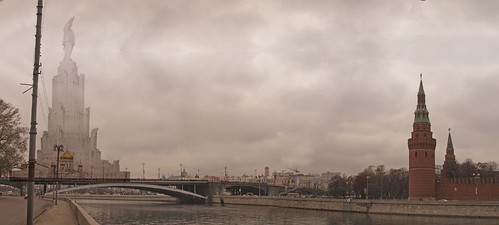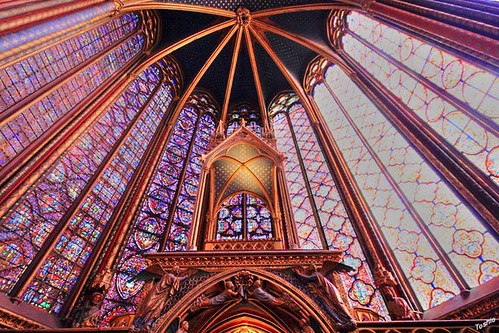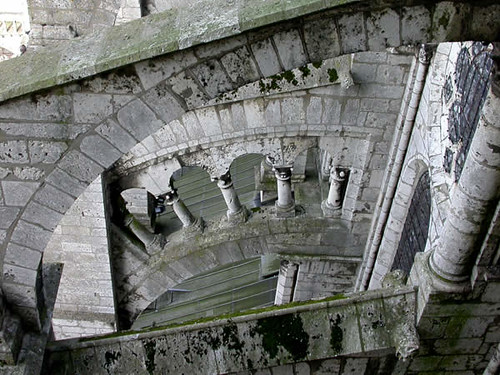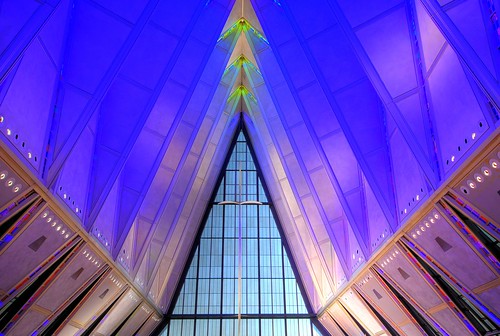This post appeared in a previous blog and is here for posterity’s sake.

My day entails phone calls from the above time zones. Which makes the day very long.
This post appeared in a previous blog and is here for posterity’s sake.

My day entails phone calls from the above time zones. Which makes the day very long.
This post appeared in a previous blog and is here for posterity’s sake.

Looks like upstate is again blocking progress in New York City:
As part of a long-term effort to improve air quality and ease traffic, the mayor’s plan would charge most drivers $8 to travel below 86th Street in Manhattan between 6 a.m. and 6 p.m. on weekdays.
The plan has been endorsed by a number of environmental groups but has aroused widespread concern in the Democratic-led Assembly, where a number of members want to proceed cautiously on such a fundamental change to the city’s traffic management.
The new report characterizes the plan as a regressive tax that puts most of the burden on poor and middle-income drivers, and cautions that the charges would need to be raised substantially to have the desired effect of easing congestion.
This isn’t a snarky question: anyone know why something wholly within the City of New York boundaries is being subjected to the State of New York? I am sure there is a logical explanation.
Because seeing a doyenne legislator from Westchester gumming up the works because his commuters, who don’t pay New York City taxes, are upset that they finally have to foot the bill for using and clogging up our streets.
Some easy way to alleviate the problems outlined by those living outside New York City:
I’m sure there is room to negotiate on this matter, if Albany isn’t too afraid of change.
Update @ 14:38:
Surprise, surprise: According to Streetsblog, Rep. Richard Brodsky has received $16,500 in donations from the parking industry over the past five years:
Yet, over the last five years Assembly Member Brodsky has accepted at least $16,700 in campaign contributions from parking garage interests, according to the New York State Board of Elections. Brodsky’s parking industry contributions far exceed those of any other state legislator (though Queens City Council Member David Weprin leads the pack with his
$20,500$40,650 haul). Specifically, Brodsky’s contributions have come from the Metropolitan Parking Association and the Mallah family, the owner of several parking companies and sometimes referred to as New York City’s “parking royalty.”The Mallah family has interests in several parking corporations including Merit Parking, Mallah Parking Corporation, Advance Parking, and Icon Parking. Shelly Mallah is also associated with New York City’s Metropolitan Parking Association and has made campaign contributions to its political action committee.
Vincent Petraro, the executive director of the Metropolitan Parking Association, a trade group representing about 800 lots and garages in New York City, has served as an intermediary for political campaign contributions for Sheldon Mallah, according to the NYC Campaign Finance Board. Petraro is also a board member of Queens Chamber of Commerce and chairman of its Legislative Advocacy Committee.
emphasis original
This post appeared in a previous blog and is here for posterity’s sake.

Wired has an essay on the by PTW Architects. Some interesting quotes:
“Our engineers became obsessed with the concept of bubbles,” says PTW project director John Bilmon. Combing through existing literature on the structure of bubbles and foam, PTW and Arup discovered an old physics problem originally elaborated by Lord Kelvin in the 19th century that concerns the most efficient method of subdividing space in equal-volume cells. Kelvin proposed that the answer involved identical geometric bubbles. But in 1994, Denis Weaire and Robert Phelan, physics professors at Trinity College, did one better by finding a more efficient way of subdividing space with a foam that used two bubbles of equal volume but different shape. That mathematical foam became the basis for the Water Cube.
Read more and see additional photos on Flickr.
This post appeared in a previous blog and is here for posterity’s sake.

For those of us who think that our 2 bedroom flats are spacious, comes this story of a single-family skyscraper:
This 60-story house is for just one family.
India’s richest man, Mukesh Ambani, is planning a palace in the heart of Mumbai with helipad, health club, hanging gardens and six floors of car parking.
His wife, mother and three children will live there with him, looked after by 600 live-in staff.
The building, already worth £500 million, could start a rush on skyscrapers.
Luckily the BBC has more information:
His skyscraper home in the city will be over 170m tall and will have an army of 600 staff to manage it.
Its 27 floors on a 4,532 sq metre plot will provide a panoramic view of the entire city of Mumbai (Bombay) once it is completed next year
I wonder who the architect is? MVRDV? Rem Koolhaas brought back from the 1990’s? Anyone taking bets?
This post appeared in a previous blog and is here for posterity’s sake.

A Tunnel Too Far – photo by NY Times
Yes, this is exactly what you think it is, Inches Too Tall for Tunnel, Rig Plies It Anyway:
It was just six inches.
That was what made the difference at 4:40 a.m. yesterday as Gilberto Cantu, a truck driver from Texas, approached the New Jersey entrance of the Lincoln Tunnel in his big rig, loaded with bathtubs, toilets and plumbing fixtures. The truck was 13 feet 6 inches high. The tunnel has a height limit of 13 feet. Six inches can make a big difference.
Mr. Cantu drove the entire 1.5 miles of the tunnel from Weehawken, N.J., to Manhattan, tearing his way under the Hudson River in the tunnel’s center tube and peeling back the roof of his tractor-trailer as if it were a tin can. No one was injured, but an undetermined number of decorative tunnel ceiling tiles were ripped off.
Not much you can say about that.
This post appeared in a previous blog and is here for posterity’s sake.
 07_панорама_набережная, originally uploaded by samsebeya
07_панорама_набережная, originally uploaded by samsebeya
What would the Palace of Soviets look like if built? Here is a Gallery of Palace of Soviets Photo montages which makes the case that some things are better left unbuilt.
What unbuilt project would you most like to see built (Freedom Tower and 2nd Avenue Subway doesn’t count).
This post appeared in a previous blog and is here for posterity’s sake.

FDNY Patches by Tod Heisler/New York Times
Regarding this NY Times article, Firefighters’ Symbol of Pride Gets Image Upgrade I wonder who exactly thinks this is a good idea? As is evident I have a real interest in FDNY heraldry and history, so what is distressing is thischange represents a real death of history right before our eyes.
Adam Greenfield has an excellent point about this, so I will quote at length:
But anybody who’s ever spent time in any kind of uniformed service will understand immediately and intimately how crucial elements like unique insignia, heraldry, and slogans are to small-unit cohesion – how displays of unit pride that seem trivial or silly to outsiders function to hold a group together under pressure, and how easily morale can be crushed when they’re taken away. I can’t imagine that the nominal offense caused by allowing a stationhouse to dub itself “Southern Comfort” outweighs the benefit to the community inherent in that stationhouse having a vivid sense of itself and its heritage of service.
More importantly still, names like these are part of the swagger, the vigor and the vibrancy of the city I love – I’d almost say, of any city worth loving. If the suits and quants upstairs decree that “professionalizing” the Fire Department means that a hook-and-ladder company can no longer dub itself the Happy Hookers, I’m not really sure who benefits from it, but I’ll tell you who loses out: we do. Our city is subtly but immeasurably the poorer for it. And if you don’t like it, I’m sure you’ll feel at home in plenty of other places – Salt Lake City comes to mind, or Colorado Springs. This is New York, baby.
Adam was a PSYOP sergeant in the US Army Special Operations Command, so his point about unit cohesion is as well taken as his point about the blanding of New York City.
This post appeared in a previous blog and is here for posterity’s sake.
Stacks, originally uploaded by Jim Frazier
Senator Clinton and Senator Kerry are co-sponsoring S. 1059 (pdf) the Zero-Emissions Building Act of 2007 (Thomas link) which would require all new or renovated Federal building to be “carbon neutral” by 2030. Design methods and energy efficient technologies to reduce energy use & demand, on-site renewable energy generation and any additional strategies not mentioned. The GSA already mandates that all new construction to achieve, at minimum, LEED Silver level certification.
This is excellent news and tracks with what the AIA has petitioned been asking Congress for the last few years. Unfortunately, there are only two co-sponsors now, and both are Democrats. If this has a chance to pass (either standalone or part of the Omnibus Energy Bill) it needs more support. Contact your Senator!
This post appeared in a previous blog and is here for posterity’s sake.

Space Needle Rendering, Paul Thiry
Great renderings of Seattle’s 1962 Century 21 Exposition; Paul Thiry was appointed principal architect in 1957.
Here is a 1983 interview with Thiry prior to the announcement of winning the AIA Seattle Medalist 1984 (interesting stuff).
Anyone else have links to cool Mid Century Modernist renderings?
This post appeared in a previous blog and is here for posterity’s sake.
Chapel of St. Ignatius, Seattle, originally uploaded by douglas
Here is a silly article concerning Steven Holl’s Chapel of St. Ignatius by Charles Mudede entitled, A Post-Occupancy Evaluation of the Chapel of St. Ignatius:
This is what it all comes down to: Can a God-fearing man who needs a moment with his perpetually man-mad God kneel in this chapel and feel the Lord’s presence?
…
I believe that it’s hard, if not impossible, for God to hear the prayers in the Chapel of St. Ignatius. When you are in the Chapel of St. Ignatius, it’s hard to pray because prayer is supposed to be done with closed eyes but all one wants to do is look at the pretty lights pouring through skylights and colored windows, particularly the blue one above the altar and the cross that hangs Jesus. There hasn’t been a time that I have entered the chapel and felt the seriousness of God; what I notice are the play of light, the curves, the crazy-looking tree growing out of the floor in the Reconciliation Chapel. The space is too complex for God, too designed for His simple presence. God is simple, he is just one thing, one All, and all you need to praise His oneness is a clearing, a direct space of worship. As at Ronchamp, the architect, not God, is worshiped in this box with bottles of light.
The building is not about Him, but about its architect, Steven Holl, who lives in New York City.
I haven’t read a criticism of architecture this inane since Herbert Muschamp left The New York Times. Two quick points: First, this review is not a A Post-Occupancy Evaluation
, being that no actual research into the building was done besides complaining it has too much light. Second, nice jab at New York City, since it really matters.
The author’s thesis (which he only supports with a few sentences) boils down to this: churches can’t be shiny, light-filled or too complex
because this reflects man’s glory, not Gods and cites Ronchamp as glorifying Corbusier, not God.
In a word: crap.
Cathedrals, churches, & chapels celebrate both God and man. Who pays for the chapels? Rich people who want to secure a place in their community or in the afterlife. Twas was, and will be.
Are we to believe, reading his article at face value, that God does not reside at religious buildings with too much light and too much “complexity?” Is he really saying this? Because it appears like he is.
So, according to Mr. Mudede’s conception of “acceptable” religious space, the following spaces God does not reside:

The Stained Glass of Sainte-Chapelle by * Toshio *
It’s obvious that Sainte-Chapelle in Paris is way too distracting, and lets too much light in. Better not go there to pray since God isn’t there.
Let’s look at another one:

Chartres – Flying Buttress
Whoa, whoa! Hold still, buster. What are those things? Are those flying buttresses? Why is it so complex? Couldn’t they just build a flat wall? I mean, come one! Give me a simple, blank wall and I can pray there.
OK, so if French Gothic is not your style what about something a bit newer:

The Cross by Iceman
And this one! Why would the US Air Force build such a distracting edifice which would discombobulate the cadets? Didn’t they realize how much concentration those fly boys (& girls) need?
All joking aside, it seems that while Mudede has been called a leftist culture critic, it appears that he left his Marxist analysis at the door; rather than analyzing why religious buildings are they way they are (see white, rich men) by analyzing wealth and structural inequalities, Mudede falls back on the laziest canard possible:
It isn’t good because I don’t like it.